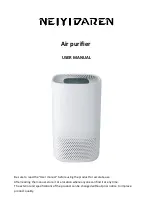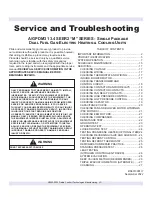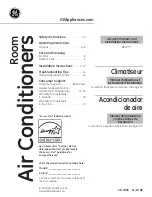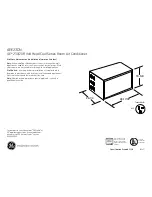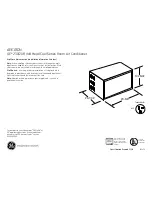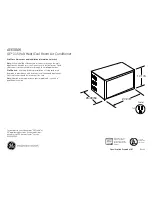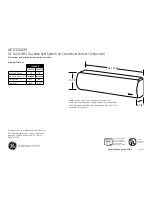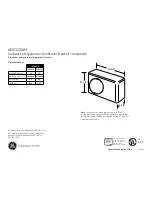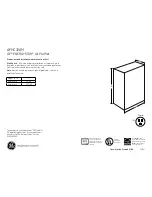
13
(Errors detected by IPDU featuring in SMMS-i standard outdoor unit - typical examples)
Check
code
Description of error
Check
code
Description of error
F13
Temperature sensor built into indoor IGBT (TH)
has been open/short-circuited.
Compressor lockup is detected
H02
H01
Inverter current (Idc) detection circuit detects
overcurrent.
H03
Abnormal current is detected while inverter
compressor is turned off.
Outdoor fan IPDU detects error.
P22
High-pressure SW is activated.
P04
Compressor motor position detection error is detected.
P29
P07
Temperature sensor built into IGBT (TH) detects
overheating.
P26
Short-circuit protection for compressor motor driver
circuit components is activated (momentary overcurrent).
Note)
The above check codes are examples only, and different check codes may be displayed depending on the
outdoor unit configuration (e.g. a Super Modular multi system). For details, see the service manual for the
outdoor unit.
(Error detected by indoor unit)
Check Codes (Continued)
E01
Signals cannot be received from indoor unit; master remote controller has not been set
(including two remote controller control).
E09
Both remote controllers have been set as master remote controller in two remote controller control
(alarm and shutdown for header unit and continued operation for follower unit)
Check
code
Description of error
Signals cannot be transmitted to indoor unit.
E02
Check
code
Description of error
Check
code
Description of error
C05
Central control device is unable to transmit signal due
to duplication of central control device.
Central control device is unable to receive signal.
—
Multiple network adapters are connected to
remote controller communication line.
C12
Device connected to general-purpose device control
interface for TCC-LINK is faulty.
P30
C06
Group follower unit is faulty (unit No. and above detail
[
∗∗∗
] displayed on main remote controller)
(Error detected by main remote controller)
(Error detected by central control device)
Note)
The same error, e.g. a communication error, may result in the display of different check codes depending
on the device that detects it.
Moreover, check codes detected by the main remote controller/central control device do not necessarily
have a direct impact on air conditioner operation.
Check
code
Description of error
Check
code
Description of error
E03
Communication from remote controller or network
adaptor has been lost (so has central control
communication).
Signals are not being received from outdoor unit.
E04
Indoor unit detects address identical to its own.
E08
E10
MCU communication between main controller and
motor microcontroller is faulty.
E18
Periodic communication between indoor header and
follower units cannot be maintained.
F01
Heat exchanger temperature sensor (TCJ) has been
open/short-circuited.
F02
Heat exchanger temperature sensor (TC2) has been
open/short-circuited.
F03
Heat exchanger temperature sensor (TC1) has been
open/short-circuited.
F10
Ambient temperature sensor (TA) has been open/
short-circuited.
F11
Discharge temperature sensor (TF) has been open/
short-circuited.
F29
Indoor EEPROM is abnormal (some other error may
be detected).
L02
In case that outdoor unit model is different
(Not corresponded)
There is more than one header unit in group.
L03
There is duplication in central control address setting.
L20
Float switch has been activated.
P10
L07
There is at least one stand-alone indoor unit to which
group control cable is connected.
L08
Address setting has not been performed for one or
more indoor units (also detected at outdoor unit end).
L09
Capacity setting has not been performed for indoor
unit.
L30
Unit shutdown has been caused by external error
input (CN80).
F17
Open/Short of outside air suction temperature sensor
(TOA) was detected.
F18
Open/Short of indoor air suction temperature sensor
(TRA) was detected.
P01
Indoor AC fan error is detected (activation of fan
motor thermal relay).
P12
Indoor DC fan error (e.g. overcurrent or lock-up) is
detected.
P31
Follower unit cannot be operated due to header unit
alarm (E03/L03/L07/L08).






























